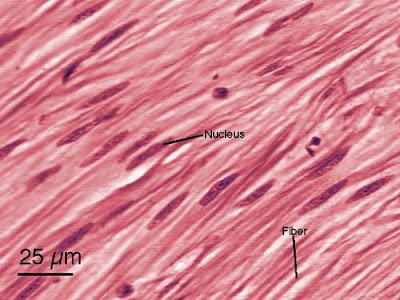Nucleus of cell
NUCLEUS,THE MAJOR PART OF CELL
🟦 Introduction
*Nucleus is the biggest organelles of a cell.
*It surrounded by a layered plasma membrane
*In the protoplasmic body all hereditary document present.
*Nucleus is called the brain of cell.
🟦 Discovery
*Leeuwenhoek(first discovered nucleus in RBC of fish blood)
*Robert Brown (1831-in the root of orchid,and also named it)
*Fontana (1781- discovered nucleolus inside nucleus)
*Stasburger(1882-described nucleoplasm)
*Flemming (1879- discussed about chromatin of nucleus)
*J. Hammerling(1953- discussed about the hereditary influence of nucleus).
🟦 Origin
*It is assumed that Nucleus is evolved from protonucleus.
*Nuclear membrane is absent in prokaryotic nucleus
*only naked chromatin substances (DNA) present in cytoplasm.
*In a ideal nucleus chromatin substances place together and surround by nuclear membrane.
🟦 Site
*In eukaryotic cells nucleus present at the middle.
*but depending upon the digestion system of cell, nucleus often change its position.
*when Vacuole form in plant cell, nucleus shifted to peripheral part.
*Nucleus is absent in RBC of mammals and sieve tube of phloem in higher class plant.
🟦 Number
*Generally there is one nucleus in one cell.
*2 nucleus- in cell of unicellular Paramecium ,Liver cell and cartilaginous cell of vertebrate
*poly nucleus- has numerous number of Nucleus,this type of cell called cenocyte.
Algae- Vaucheria
Fungi- Rhizopus
Protozoa- Opalina
Bone cell of mammals.
🟦 Nature
*Eukaryon- if a cell contain one type of Nucleus.
*Homokaryon/dikaryon-if 2 same of Nucleus present in single cell.
*polykaryon- one cell contain one type of numerous nucleus.
*Heterokaryon-2 different types of Nucleus present in one cell.
*Synkaryon- if 2 type of Nucleus joined to form a Nucleus,and present in a cell called synkaryon.
Clear your concept with this video
*Amphinucleus-Diploid (2n) Somatic cells.
*Heminucleus- haploid (n) reproductive cell.
*Micronucleus and Macronucleus-a cell contain 2 Nucleus, larger one is macronucleus; smaller one is micronucleus.
*Pronucleus-Sperm (n) and Ovum (n) before fertilization.
*Kidney shaped- WBC-Besophil
*Horse bow shaped- present in Verticella
*A Nucleus in interphase has a diameter of 5-25 μm.
*As per Hertwig,

Where,
NP- nucleoplasmic index
Vn- volume of Nucleus
Vc- volume of cytoplasm
🟦 Introduction
*Nucleus is the biggest organelles of a cell.
*It surrounded by a layered plasma membrane
*In the protoplasmic body all hereditary document present.
*Nucleus is called the brain of cell.
🟦 Discovery
*Leeuwenhoek(first discovered nucleus in RBC of fish blood)
*Robert Brown (1831-in the root of orchid,and also named it)
*Fontana (1781- discovered nucleolus inside nucleus)
*Stasburger(1882-described nucleoplasm)
*Flemming (1879- discussed about chromatin of nucleus)
*J. Hammerling(1953- discussed about the hereditary influence of nucleus).
🟦 Origin
*It is assumed that Nucleus is evolved from protonucleus.
*Nuclear membrane is absent in prokaryotic nucleus
*only naked chromatin substances (DNA) present in cytoplasm.
*In a ideal nucleus chromatin substances place together and surround by nuclear membrane.
🟦 Site
*In eukaryotic cells nucleus present at the middle.
*but depending upon the digestion system of cell, nucleus often change its position.
*when Vacuole form in plant cell, nucleus shifted to peripheral part.
*Nucleus is absent in RBC of mammals and sieve tube of phloem in higher class plant.
🟦 Number
*Generally there is one nucleus in one cell.
*2 nucleus- in cell of unicellular Paramecium ,Liver cell and cartilaginous cell of vertebrate
*poly nucleus- has numerous number of Nucleus,this type of cell called cenocyte.
Algae- Vaucheria
Fungi- Rhizopus
Protozoa- Opalina
Bone cell of mammals.
🟦 Nature
*Eukaryon- if a cell contain one type of Nucleus.
*Homokaryon/dikaryon-if 2 same of Nucleus present in single cell.
*polykaryon- one cell contain one type of numerous nucleus.
*Heterokaryon-2 different types of Nucleus present in one cell.
*Synkaryon- if 2 type of Nucleus joined to form a Nucleus,and present in a cell called synkaryon.
Clear your concept with this video
*Amphinucleus-Diploid (2n) Somatic cells.
*Heminucleus- haploid (n) reproductive cell.
*Micronucleus and Macronucleus-a cell contain 2 Nucleus, larger one is macronucleus; smaller one is micronucleus.
*Pronucleus-Sperm (n) and Ovum (n) before fertilization.
🟦 Shape
*Rounded- Cuboid epithelial cell.
*Oval shaped- Columnar epithelial cells
*Flat plane like-Squamous epithelial cells
*Rounded- Cuboid epithelial cell.
*Oval shaped- Columnar epithelial cells
*Flat plane like-Squamous epithelial cells
*Kidney shaped- WBC-Besophil
*Horse bow shaped- present in Verticella
eosinophils
*Elongated Nucleus- smooth muscle
*Convex Nucleus- Amoeba
*Branched-silk gland of silk moth
*garland shaped- Present in the cell of Stentor
🟦 Size*Elongated Nucleus- smooth muscle
*Convex Nucleus- Amoeba
*Branched-silk gland of silk moth
*garland shaped- Present in the cell of Stentor
*A Nucleus in interphase has a diameter of 5-25 μm.
*As per Hertwig,

Where,
NP- nucleoplasmic index
Vn- volume of Nucleus
Vc- volume of cytoplasm






















Very nice .. Thanks
ReplyDelete